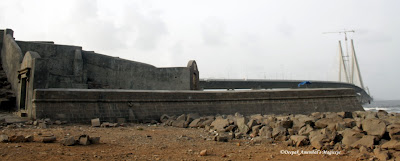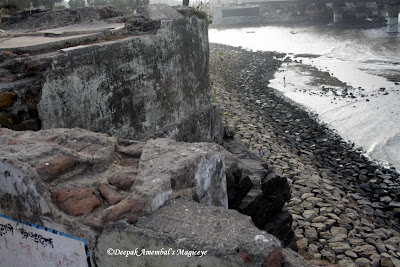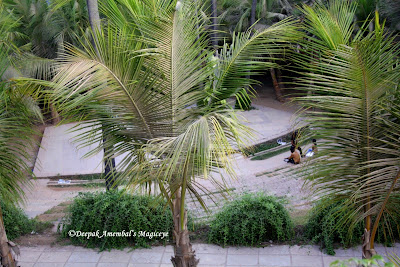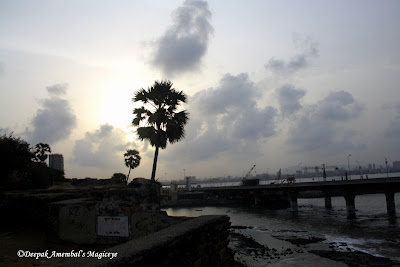At ‘Land’s end’ in Bandra there are the ruins of an old Portugese fort - Castella de Aguada (Portuguese: "Fort of the Waterpoint"), also known as the Bandra Fort.

The name indicates its origin as a place where fresh water was available in the form of a fountain

("Aguada") for Portuguese ships cruising the coasts in the initial period of Portuguese presence. It was built in 1640 as a watchtower.
The Portuguese, who had established a base in the area in 1534 after defeating Bahadur Shah of Gujarat, built several sea forts along the western Indian coastline.

Castella de Aguada was one such strategically located fort, overlooking the Mahim Bay to the south, the Arabian Sea to the west, the islands of Worli to the south and the town of Mahim to the south west. The fort also guarded the northern sea route into Mumbai Harbour.

The strategic value of the fort was enhanced in 1661 after the Portuguese ceded the seven islands of Bombay that lay to the immediate south of Bandra to the British.
After the decline of the Portuguese in the early 18th century, the Marathas became the largest threat to British possessions. Sensing an impending Portuguese defeat, the British partially

demolished the fort as a precautionary measure. The demolition would obviate the possibility of the fort being captured by the Marathas, with the possibility of it being used as a forward military base to attack British Bombay.

In 2003, a conservation program was started by Bandra Band Stand Residents’ Trust to save the fort. It was spearheaded by a local Member of Parliament (MP), Shabana Azmi, who funded part of the effort from her allotted funds. The brick arch of one of the gateways on the verge of collapse, and the foundation masonry of the fort wall that was in danger of tidal erosion were repaired.

The nearby Taj Land's End Hotel is responsible for maintenance of the fort
The fort is owned by the Archaeological Survey of India (ASI). Included in the fort makeover are the preservation of the natural rock formations, providing pathways, and the creation of an

amphitheatre. The architect for the makeover was P.K. Das.
The way up the fort is a short flight of stone steps. Once on top the views all around are worth the visit.

A lotus pond to meditate on.

In the south you have the marvellous Bandra Worli sealink and on the north is the Taj Lands

End Hotel.

The sea in the west never ceases to fascinate.

And if you are there early in the morning you shall catch the sunrise in the east

and people exercising

dogs chilling
Here is a map to help you get there.